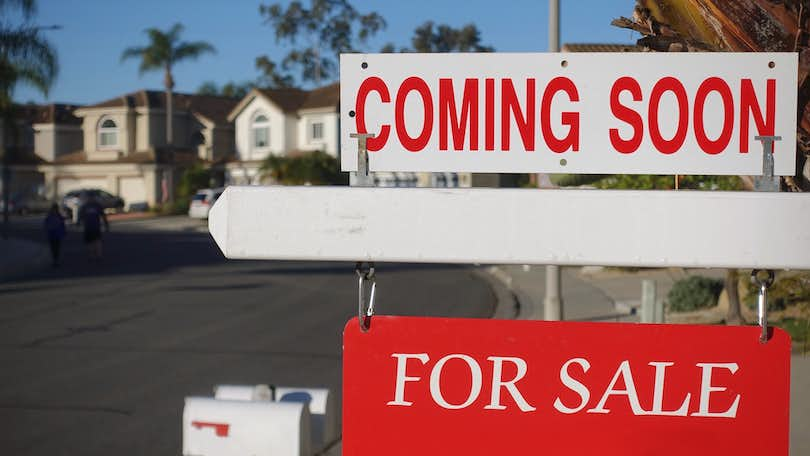
Most cities have an up-and-coming neighborhood or two. These neighborhoods are often historically under-resourced areas experiencing renewed interest from home buyers, developers, and local governments.
Buying a home in an up-and-coming neighborhood might seem simple, but it requires a nuanced approach to be successful. Here are 17 things to know before you buy in an emerging neighborhood.
1. Know your reason for buying
Up-and-coming neighborhoods can be just as appealing as established areas. Make sure you understand your goals for buying in that neighborhood and really know your “why.”
It could be that you’re looking for more living space at an affordable price. You may be looking for a larger, multifamily unit to invest in, such as an apartment building or duplex. Whether you’re looking for the right house for your family or a lucrative investment property will inform where and how you search for, buy, and finance the home.
2. Research the area's public and private development plans
Many cities allow public access to certain development plans. If you live in a city, your city's website may include updates on developments that could impact your purchase, such as:
-
New construction
-
Planned demolitions
-
Infrastructure improvements
-
Community developments
Infrastructure projects like road work or public transportation improvements may impact the affordability or the future of an up-and-coming neighborhood.
3. Understand the neighborhood’s price patterns
Market volatility is a common part of home buying. When you buy in an up-and-coming neighborhood, know how to make sure you’re getting the best value and return on your potential investment.
You can get a sense of the neighborhood’s home price trends and fluctuations by conducting a comparative market analysis using popular real estate listing websites. Look at listings over 5 to 10 years to understand if the neighborhood is experiencing price increases or if the market is unstable.
This is especially important if you plan to generate income with a rental property. A shaky housing market could make it difficult to earn that extra cash.
4. Explore the location before you buy
In up-and-coming neighborhoods, home prices can vary between blocks. Scout out the neighborhood to get a sense of where you want to buy and how compatible each subsection is with your lifestyle.
Typically, the sections of up-and-coming neighborhoods on the boundary with more established neighborhoods will have more access to the established area’s amenities and benefits, but may be more expensive to purchase. If you’re searching without a realtor, explore your options for accessing the MLS on your own to do your due diligence.
5. Research the quality of public schools
The quality of local public schools is important even if you don’t have school-age children. Housing prices and school quality are often linked. It’s usually more expensive to live in a great public school district.
Public schools in emerging neighborhoods often suffer due to lower home values and property tax revenue. It may not be an issue for someone without children looking for affordable housing, but if you’re buying as an investment, it’s worth considering the public school prospects.
6. Know how to read a crime report
It’s easy for news outlets to sensationalize crime in up-and-coming neighborhoods. The city or municipality’s local government may have a public crime or emergency report database you can access to research your neighborhood.
Use the safety statistics and crime rates for the neighborhood, as well as historical trends, to determine the safest part of the neighborhood to buy in.
7. Factor in local amenities
Weigh the positives of your potential new neighborhood along with the negatives. As you research, make an inventory of neighborhood amenities, such as parks, restaurants, community centers, gyms, and other public spaces.
Your potential home’s proximity to essential services like hospitals or libraries will impact its value. A real estate agent who knows the neighborhood can give you the inside scoop on the community and its amenities.
8. Get to know the community
The success of an emerging neighborhood depends on community investment. A community of engaged residents means more support for community amenities and structural improvements.
If you’ve already decided on a neighborhood, check out local neighborhood associations, town hall meetings, and volunteering initiatives to establish community relationships early. Look for open meetings to gauge how current residents feel about the neighborhood before purchasing your home.
9. Understand transportation options
Don’t underestimate the benefits and drawbacks of transportation access. Transportation infrastructure has the power to make or break neighborhoods. Imagine you discover your dream home — only to find it’s next to a noisy railroad track or highway, or you invest in an apartment building with no parking or access to public transportation.
Your home’s proximity to transit and major commuting routes will impact your home’s appreciation, especially if you plan to resell or list it as a rental.
10. Research the neighborhood’s growth prospects
Look into the economic growth and employment opportunities in your emerging neighborhood. If residents are working in or around the neighborhood, that’s a good sign that there will be continued growth and investment in the area.
Consider the presence of both local small businesses and major employers, especially if the neighborhood isn’t near any major urban population center. If the neighborhood is attractive to businesses and residents, that’s a good sign for you as a potential buyer.
11. Consult a real estate agent
Having a trusted realtor in your corner is critical for exploring a home purchase in an emerging neighborhood. A reputable, local real estate agent or broker has unique insight into the housing trends in an up-and-coming neighborhood, including on properties that may not even be listed yet.
A real estate agent always has some skin in the game when their commission depends on making a sale. Consider a realtor an expert resource you can add to your research toolkit.
12. Don’t discount FSBO listings
Homeowners in up-and-coming neighborhoods may opt to independently list their homes to save on real estate broker costs. Exploring for-sale-by-owner (FSBO) listings offers a unique opportunity to talk directly to residents about their decision to sell in the neighborhood.
Most FSBO sellers don’t list their properties on the MLS. The homes themselves also may not be as polished as the ones listed by professional realtors. Still, investigating FSBO properties will provide more information on the neighborhood market that you might not get from a real estate agent.
13. Be ready to pay cash
Be on the lookout for foreclosures in your up-and-coming neighborhood. Although not an ideal indicator of neighborhood success, buying a foreclosure is one way to buy a home in a promising neighborhood at an affordable price.
Purchasing a home requires cash on hand, but many foreclosure properties only accept all-cash offers.
14. Do a deep dive on the rental market
The rental market will determine how much you’re able to list your home for, especially if you’re purchasing it as an investment property.
Use popular home listing websites to evaluate the demand for rentals, typical monthly prices, and vacancy rates. You should also look up official housing complaints to city or municipal governments, especially if you already have a dwelling in mind.
15. Understand the impacts of gentrification
Up-and-coming neighborhoods that receive sudden influxes of investment can fall prey to the negative aspects of gentrification. Gentrification describes the process by which local and longtime residents are rapidly priced out of an emerging neighborhood and displaced from their homes as property values and rents become unaffordable.
Gentrification has wide-ranging adverse impacts on low-income communities. Identify signs of gentrification, such as new cafes, boutique stores, or luxury buildings, and understand how you might work to offset your contribution to this common social challenge.
16. Be ready for a fixer-upper
Your new home in an up-and-coming neighborhood might not be as polished or new as homes in more established communities. Fluctuating investment in an emerging neighborhood means older homes with fewer renovations, if any.
You might save money on the overall cost of the home in your new neighborhood, but you can expect to put significant investment into updating and renovating the property.
17. Research your loan options
You may not be able to buy in an up-and-coming neighborhood with traditional loan options. Depending on your purchase price and remodeling requirements, you may need different types of loans to finance your home.
If you end up buying a foreclosed fixer-upper, for example, you still might need a construction loan to ensure your new home meets safety standards.
Buying in an up-and-coming neighborhood has challenges and opportunities
Like any home purchase, buying in an up-and-coming neighborhood requires patience and hard work. Due diligence is always important when investing. If you’re buying in an up-and-coming neighborhood, think like an investor. Resources like public city websites, real estate agents, and the locals themselves can empower you to make the best decision possible.
This article originally appeared on Clever Real Estate.
